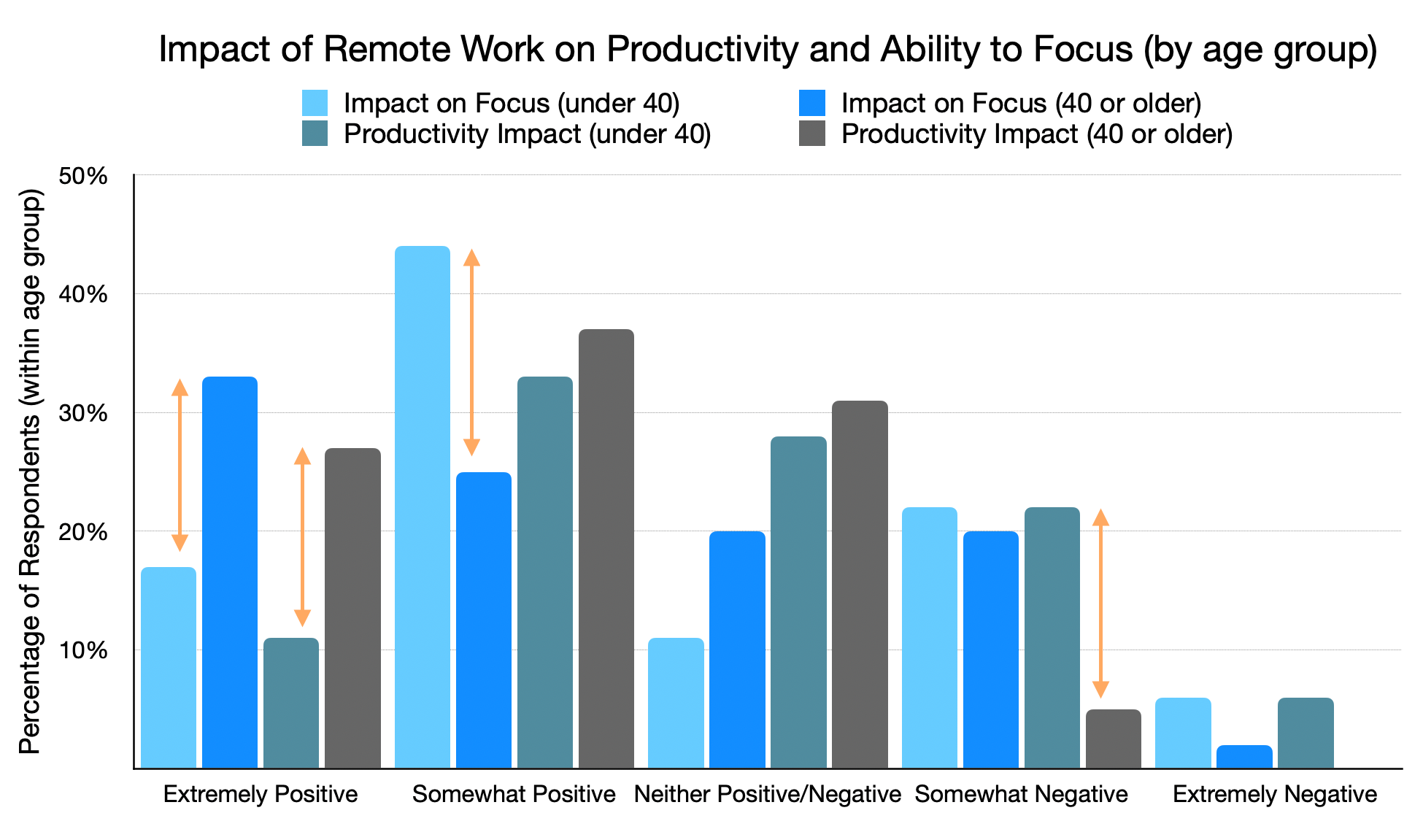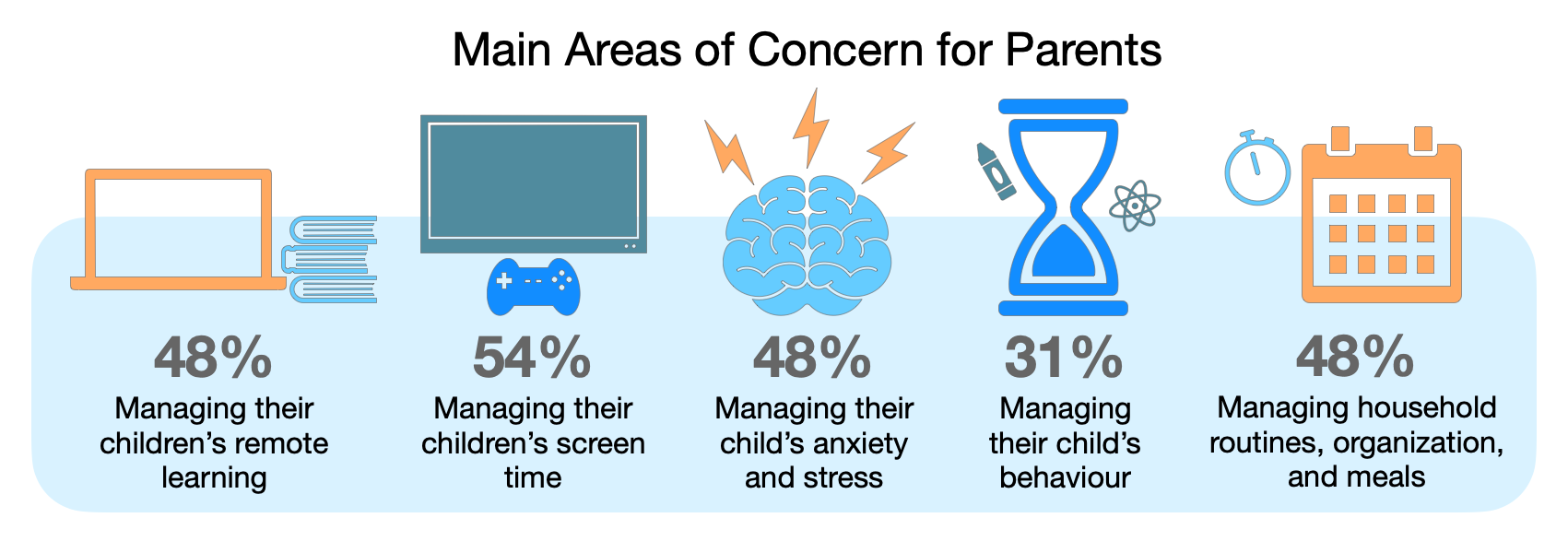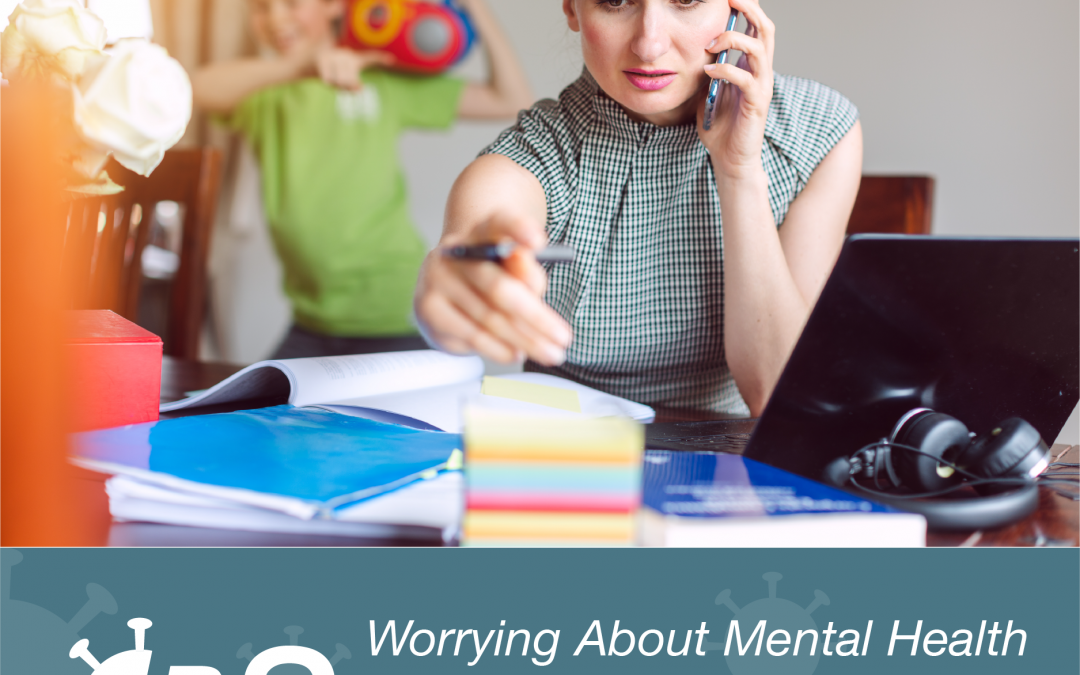In September, Real Strategy Advisors conducted an online survey seeking a deeper understanding of what people’s experiences have been working from home during the pandemic and how COVID-19 has impacted the workplace…
In our article 25% Drop in Office Demand (or More!), Real Strategy shared the results from our survey confirming that the remote working experience has been received positively in general, with self-reported positive impacts on the ability to focus and maintain productivity. We also observed that there are still challenges when it comes to collaborative teamwork. This leads to questions about how company culture and team cohesion can be fostered in a primarily remote work environment. Somewhat unexpectedly, results also show that younger workers (under 40) are actually more negatively impacted by the work-from-home environment.

This finding makes intuitive sense on the surface for a variety of possible reasons:
- Office professionals 40 and over are likely to be more established and therefore financially well-off living in a house with more space for a proper home-office setup
- Older parents in this age cohort typically have kids who are more likely to have left school or be living at home (though some parents may argue otherwise!)
- The under 40 crowd, by contrast, may be living in a smaller, noisier downtown apartment or condo and possibly with roommates (who might also be working alongside)
- Parents under 40 are more likely to have younger school-aged children that require more active and attentive parenting
If we hone in on the parent struggle, although our survey didn’t enquire about mental health impacts, it can be couched in some of the research published in October by the Centre for Addiction and Mental Health (CAMH) showing that younger adults, parents, and more notably women are amongst those struggling the most during the pandemic.
Mental health impacts
The CAMH study conducted in late September showed that, during the pandemic, young adults have been more likely to experience mental health issues. The survey also found that the number of parents with children still at home (under 18) who reported feeling depressed was roughly 10% higher than those without kids. Parents of school-aged children have to juggle working, schooling, as well as parenting… and now we’re in a second wave reigniting heightened concerns. These findings echo the research done by McMaster University throughout May and June (during the first wave) when more than half of parents and caregivers were showing signs of depression. At that time, parents/caregivers were reporting moderate to high concern for the following:

(Source: McMaster University’s Oxford Centre for Child Studies)
Real Strategy has been hearing stories along these lines in discussion with prominent businesses and thought leaders. For example, Heather Norris, CEO of Ottawa Network for Education/Réseau d’Ottawa pour l’Éducation, commented on how:
“We have been thrust into figuring out what our new, virtual workplace culture is and/or should be. Staff miss the social aspects and camaraderie that in-office work provided and we are diligently working to support mental health wellness.” — Heather Norris (CEO, Ottawa Network for Education/Réseau d’Ottawa pour l’Éducation)
If we look at the mental health impact of the pandemic on women specifically, almost one in four women feel a moderate to severe degree of anxiety and loneliness versus 18% of men who reported similar feelings. These were amongst some of the highest anxiety levels reported in months. Parents continue to report concerns of children returning to school or participating in a remote learning environment for the first time, while also balancing their own work and home responsibilities.
Questions on returning to work
As organizations struggle to predict and plan when their team will be returning to work, and in light of an expected increase in demand from staff to work from home, Real Strategy believes we should be asking ourselves the following questions:
- With most people working remotely some or most of the time, how much physical space should be kept and how should it be utilized?
- How will office layouts need to be adapted?
- What additional policies and procedures should be put in place (e.g. surface sanitation, desk sharing, population density, paperless environment, and minimum employee attendance, etc.)?
A recent and interesting hiring trends survey by Hays Canada reported that nearly half of respondents said they’re ready to quit their job, almost a 10% uptick from last year. During the pandemic, employees have dealt with increased workloads, social isolation, and a lack of resources from their employers for stress management and general well-being. The report also touches on that, while people may feel like they’ve been more productive at home, overall efficiency has suffered due to their poor ability to collaborate.
While it may seem obvious that not every employee requires a dedicated seat in the office, we will need to accommodate those requiring a workspace for whom working from home is not an option. In addition, since many employees will be coming to the physical office to work primarily in collaboration with their peers, we will likely require an increased concentration of both open and enclosed gathering/meeting spaces. New hires who need more in-person mentorship and direction while onboarding, will likely need to be physically present more frequently than a company vet of ten years. What we know for sure is that approaching the situation with a one-size-fits-all mentality fundamentally won’t work and negatively affects certain people.
What’s clear is that the ratio of physical attendance versus remote work is changing. Thus, the social contract between the employer and employee will need to be reviewed with respect to the minimum level of attendance in the physical office that an employer will tolerate (which may be in contrast with the stated preferences of employees. This will have a direct impact on how organizations allocate space and plan physical layouts — we’ll touch on these in our following article!
The decrease in tenant demand has already led to increased sublet availability and tenant-friendly savings. Contact Real Strategy Advisors today so we can have a discussion surrounding your organization’s policy regarding remote work and how to achieve immediate savings. We’ll use real data from your company to come up with a solution custom-tailored to your needs!
Please click here to read Part 4: https://realstrategy.com/construction-layout-office-transformation-covid-19/

